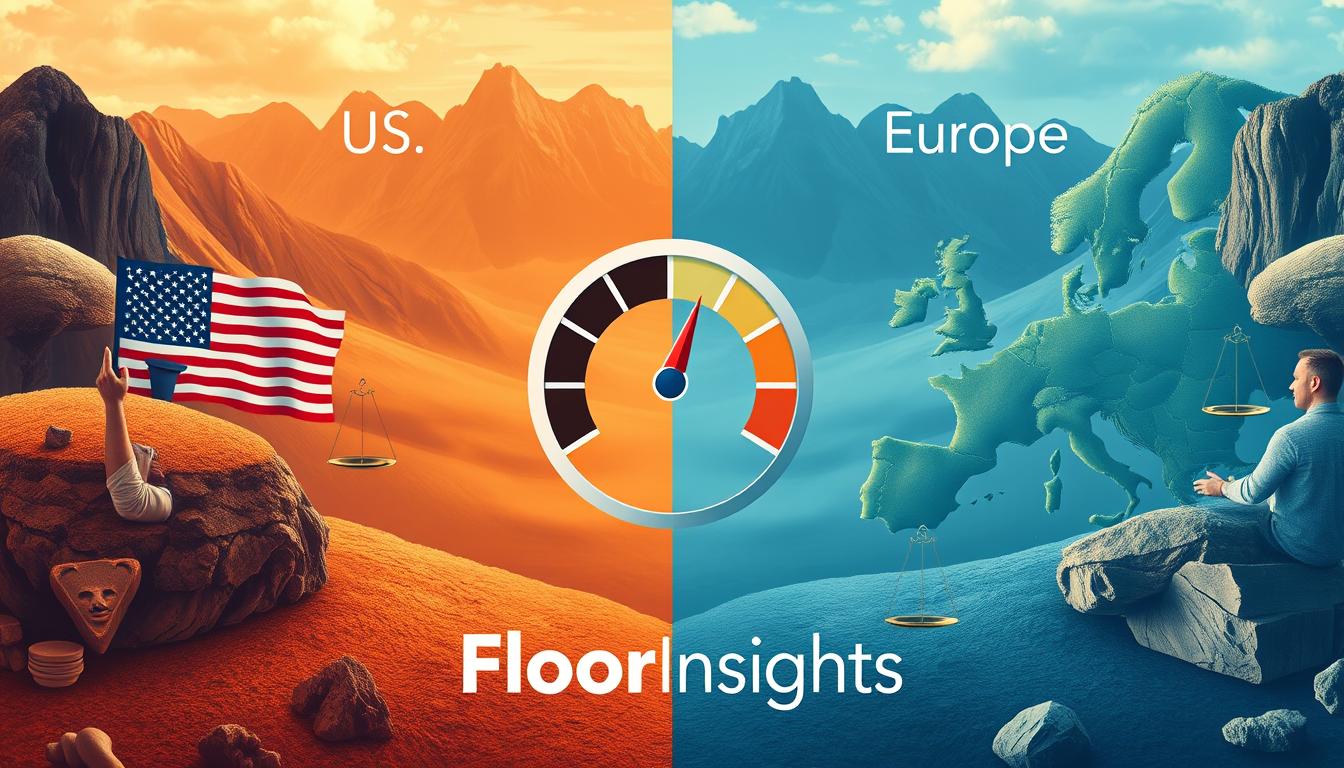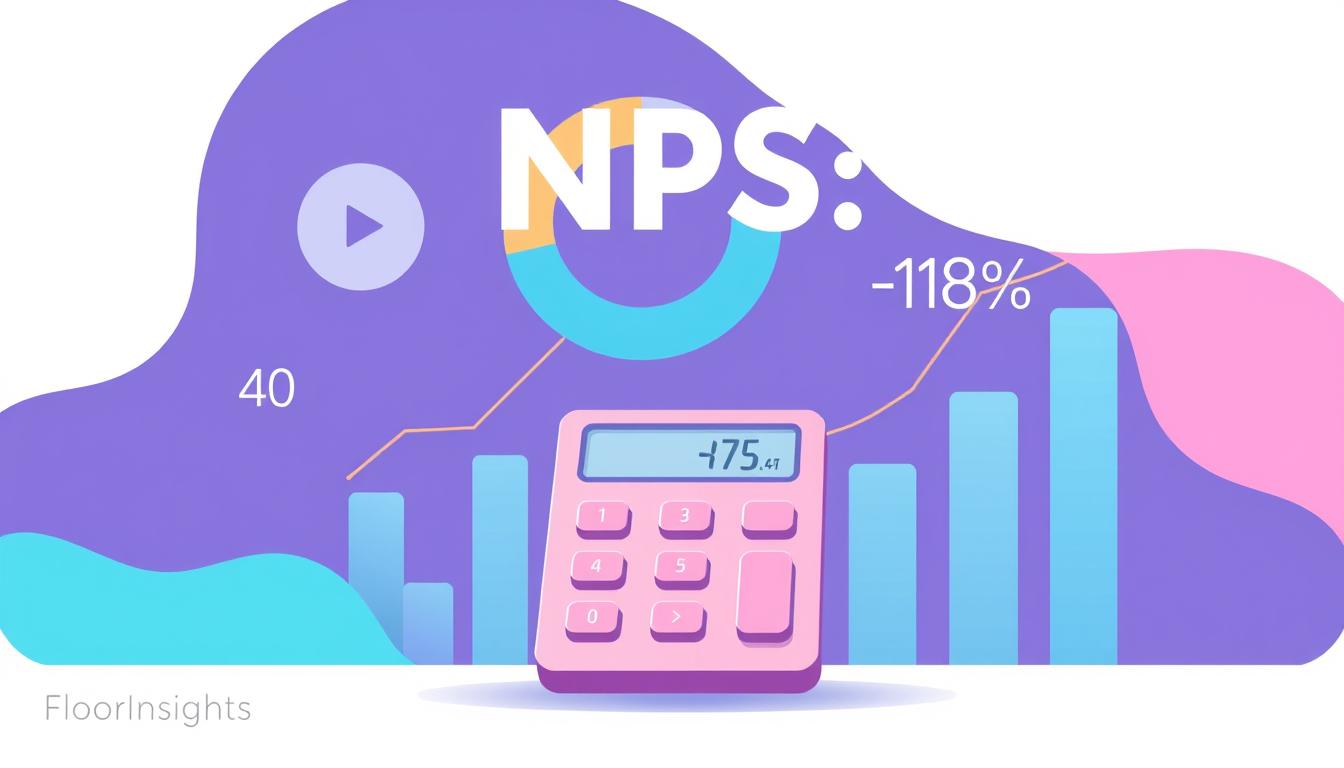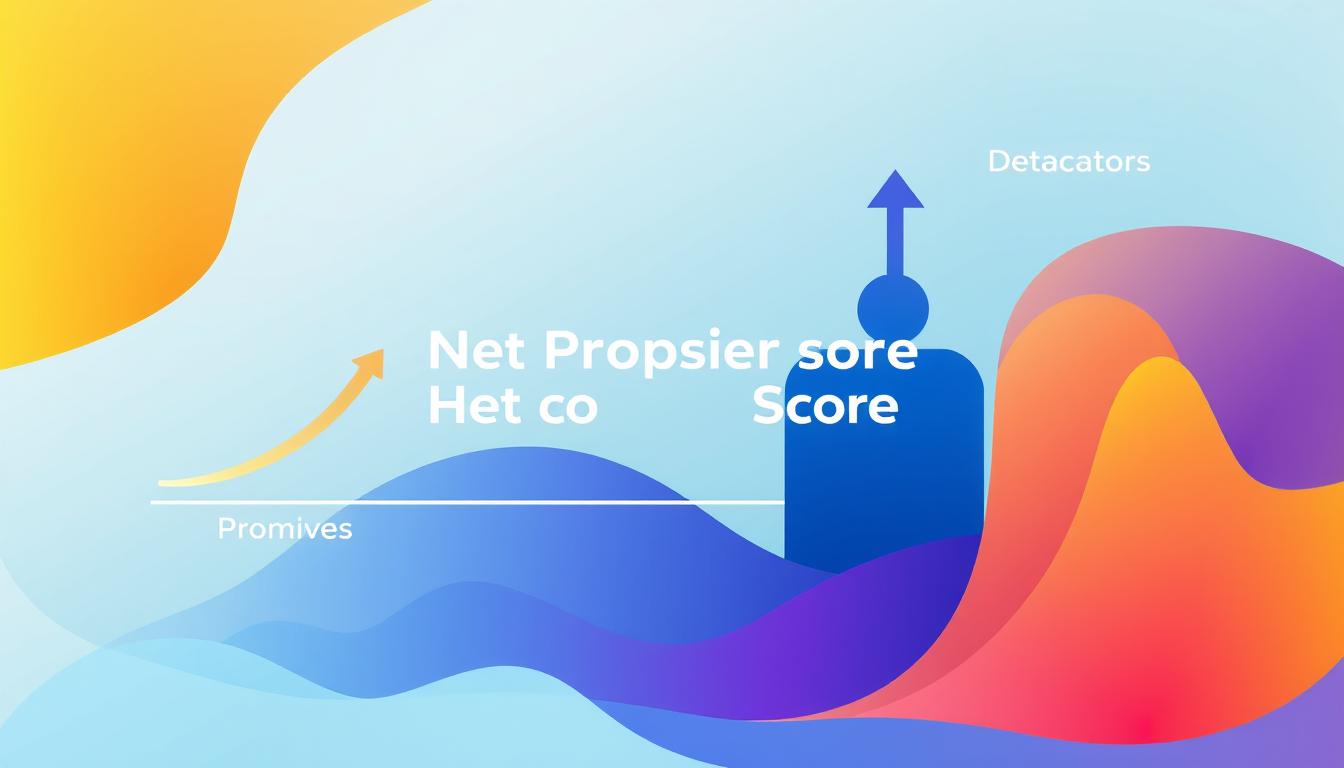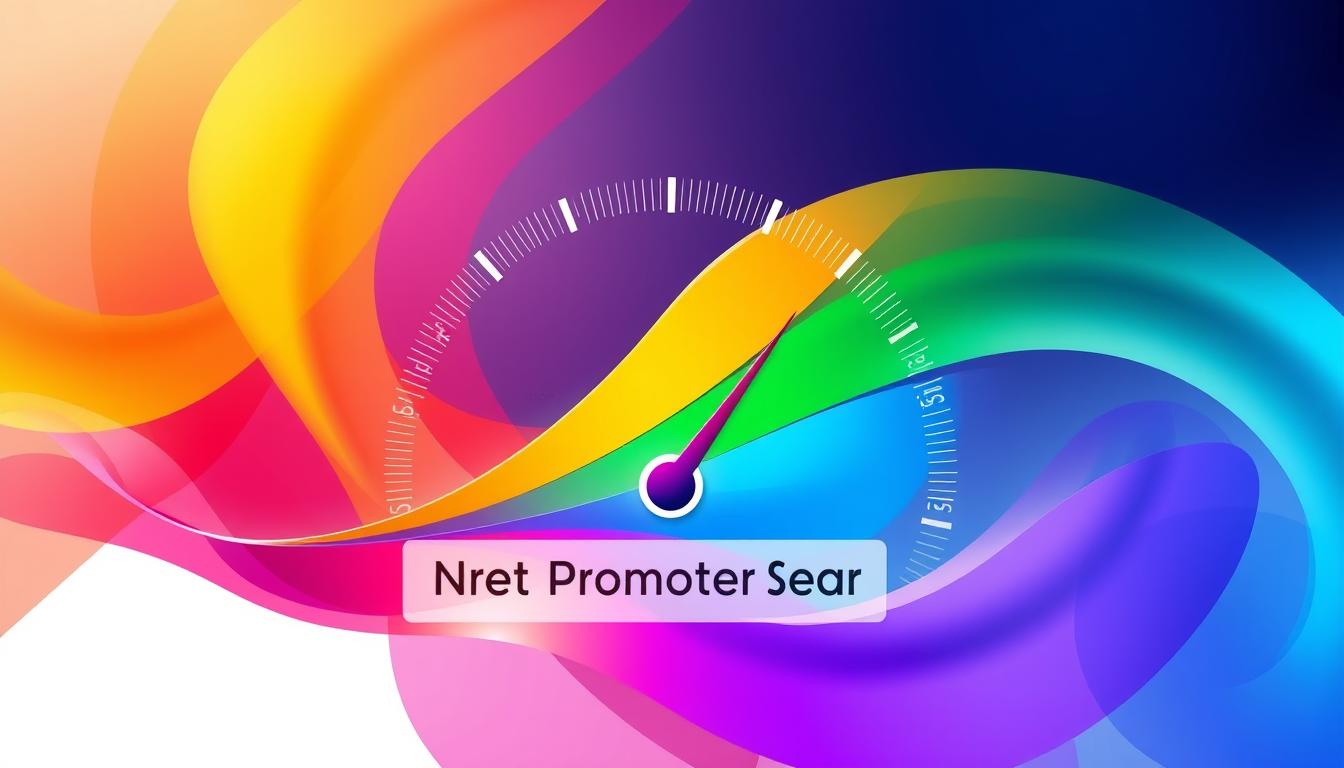As businesses across India strive to enhance customer loyalty and satisfaction, a critical metric to monitor is the Net Promoter Score (NPS). This powerful gauge of customer sentiment offers valuable insights into how customers perceive and engage with brands. In this article, we delve into the intriguing differences in NPS trends between the United States and Europe, exploring the key factors driving these regional variations and the implications for Indian companies seeking to optimize their customer experience strategies.
Key Takeaways
- The United States and Europe exhibit distinct NPS trends, reflecting differences in customer preferences and market dynamics.
- Understanding these regional variations is crucial for Indian businesses to tailor their customer experience strategies effectively.
- Factors such as industry, brand reputation, and customer engagement influence NPS scores across different markets.
- Leveraging NPS data can help Indian companies strengthen customer loyalty and drive sustainable growth.
- Integrating customer feedback and voice-of-the-customer insights into NPS strategies is essential for long-term success.
Unveiling the Power of Net Promoter Score
The Net Promoter Score (NPS) is a widely adopted metric that measures customer loyalty and satisfaction. This simple yet powerful tool provides businesses with valuable insights into their customers’ experiences and their likelihood to recommend the product or service to others. Understanding the power of NPS is crucial for any organization that aims to deliver exceptional customer experiences and drive brand advocacy.
What Is the Net Promoter Score?
The Net Promoter Score is calculated based on a single question: “How likely are you to recommend [Company/Product/Service] to a friend or colleague?” Customers respond on a scale of 0 to 10, with 0 being “Not at all likely” and 10 being “Extremely likely.” Based on their responses, customers are categorized into three groups:
- Promoters (9-10): Loyal customers who are enthusiastic about the product or service and are likely to refer others.
- Passives (7-8): Satisfied but unenthusiastic customers who are vulnerable to competitive offerings.
- Detractors (0-6): Unhappy customers who are unlikely to make repeat purchases and may spread negative word-of-mouth.
Why Is the NPS Important?
The Net Promoter Score is a powerful metric because it directly measures customer loyalty and advocacy. A high NPS indicates that a company has a strong base of loyal customers who are willing to promote the brand, while a low NPS suggests the need for improvements in customer experience and satisfaction. By tracking NPS over time, businesses can monitor the health of their customer relationships and identify areas for growth and optimization.
“The Net Promoter Score is a simple yet powerful metric that provides a clear and actionable way to measure customer loyalty and advocacy. It is a must-have KPI for any customer-centric organization.”
Analyzing NPS Trends in the United States
The United States is a crucial market when it comes to understanding the dynamics of the Net Promoter Score (NPS). As a leading economic powerhouse, the performance of American businesses in terms of customer loyalty and satisfaction holds valuable insights for companies across the globe. Let’s delve into the current state of NPS trends within the United States and uncover the industries and sectors that are excelling or struggling in this crucial metric.
According to the latest industry reports, the United States maintains an average NPS of 43, which is slightly above the global benchmark of 32. This indicates that American consumers, on average, are more likely to recommend the products and services they use to their peers. However, when we analyze the NPS scores across different industries, we observe a notable disparity.
| Industry | Average NPS |
|---|---|
| Technology | 59 |
| Retail | 44 |
| Healthcare | 38 |
| Finance | 35 |
| Telecommunications | 28 |
As the data suggests, the technology industry in the United States leads the pack with an impressive average NPS of 59, indicating that customers are highly satisfied and loyal. On the other hand, the telecommunications sector struggles with a below-average NPS of 28, signaling room for improvement in customer satisfaction and customer loyalty.
Understanding the NPS trends in the United States is crucial for businesses operating in this pivotal market. By benchmarking their performance against industry peers, companies can make informed decisions to enhance their customer experience and drive sustained growth.”
The insights gained from analyzing the NPS landscape in the United States can serve as a valuable reference point for businesses in India. By aligning their strategies with the best practices observed in the American market, Indian companies can unlock new opportunities to strengthen their Net Promoter Score and cultivate a loyal customer base.
Exploring NPS Dynamics in Europe
As we delve into the Net Promoter Score (NPS) landscape in Europe, we uncover a fascinating mosaic of regional variations and industry-specific insights. While the United States has provided valuable benchmarks for customer loyalty metrics, Europe’s diverse markets offer a unique perspective on the dynamics shaping the customer experience.
Regional Variations in European NPS
Across the European continent, we observe notable differences in NPS scores. Countries like the United Kingdom and Germany tend to exhibit higher NPS values, reflecting a more customer-centric approach in these mature markets. In contrast, some Eastern European nations have relatively lower NPS scores, indicating an opportunity for businesses to enhance their customer experience and customer loyalty initiatives.
Industry-Specific NPS Insights
When we examine Net Promoter Score data across various industries in Europe, a nuanced picture emerges. The technology and e-commerce sectors often lead the pack, boasting impressive NPS scores as they cater to the digital-savvy European consumer. Conversely, traditional industries such as finance and utilities tend to lag behind, suggesting a need for these sectors to prioritize customer experience improvements to drive customer loyalty.
| Industry | Avg. NPS in Europe |
|---|---|
| Technology | 45 |
| E-commerce | 38 |
| Finance | 22 |
| Utilities | 19 |
By understanding these nuances in the European Net Promoter Score landscape, businesses can tailor their strategies to address the unique needs and expectations of their customers, ultimately driving customer loyalty and advocacy in this dynamic market.
Key Factors Driving NPS Differences
As we delve into the nuances of Net Promoter Score (NPS) across the United States and Europe, it’s essential to understand the key factors that contribute to the disparities observed in these regions. The differences in customer satisfaction, customer retention, and brand advocacy can be attributed to a complex interplay of cultural, economic, and industry-specific variables.
One notable factor is the cultural landscape. The United States, with its emphasis on individualism and consumer choice, often fosters a more competitive business environment. Conversely, the European market tends to have a stronger focus on work-life balance and community-oriented values, which can shape customer expectations and loyalty. These cultural differences can significantly impact how customers perceive and engage with brands, ultimately influencing NPS trends.
Economic factors also play a crucial role. The relative strength of national economies, consumer purchasing power, and the availability of alternative products or services can all contribute to the variations in NPS across regions. Regions with more stable and prosperous economies may foster higher levels of customer satisfaction and brand advocacy, leading to higher NPS scores.
Additionally, industry-specific dynamics can significantly influence NPS. Certain sectors, such as technology or financial services, may have inherently higher NPS due to the nature of their products, customer interactions, and the level of innovation within the industry. Understanding these industry-specific nuances is crucial in accurately interpreting and comparing NPS data across different markets.
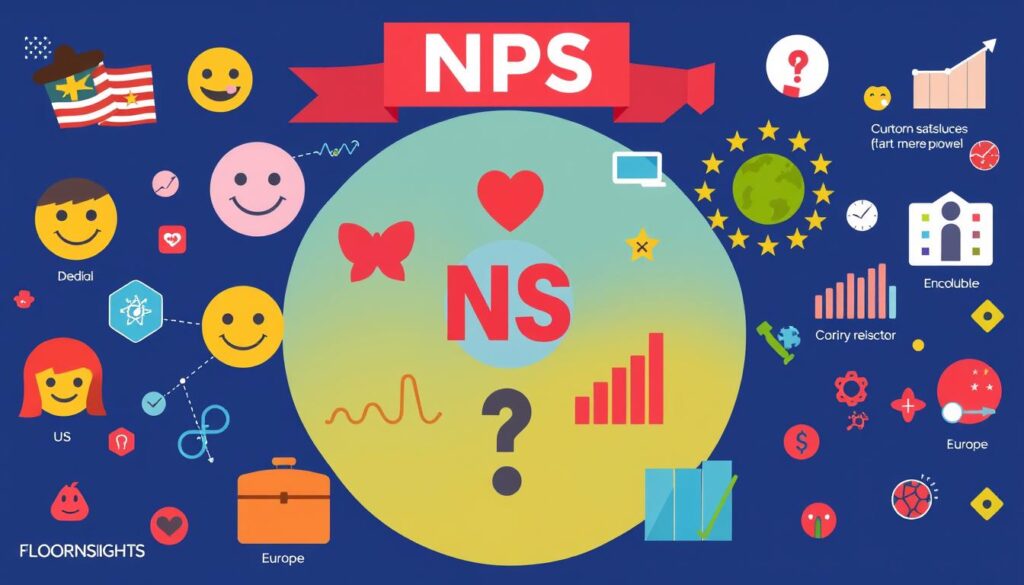
By considering these multifaceted factors, we can gain a deeper understanding of the complex landscape that shapes Net Promoter Scores in the United States and Europe. This knowledge can empower businesses to make more informed decisions, tailor their strategies to regional preferences, and ultimately enhance their customer retention and brand advocacy efforts.
Net Promoter Score and Customer Loyalty
The Net Promoter Score (NPS) is not just a metric – it’s a powerful indicator of customer loyalty and retention. Studies have consistently shown a strong correlation between a company’s NPS and its ability to retain customers over the long term. In fact, businesses with high NPS scores tend to enjoy greater customer loyalty, higher customer lifetime value, and more effective brand advocacy.
The Correlation Between NPS and Customer Retention
Customers who are promoters (those who rate a company 9 or 10 on the NPS scale) are far more likely to remain loyal and continue doing business with the organization. In contrast, detractors (those who rate a company 6 or below) are more prone to churn and are less likely to recommend the brand to others.
Research has shown that a 12-point increase in a company’s NPS can lead to a 5% reduction in customer churn. This underscores the powerful impact that delivering an exceptional customer experience and nurturing brand advocacy can have on customer retention and long-term business success.
“Customers who are promoters are far more likely to remain loyal and continue doing business with the organization.”
By focusing on improving the Net Promoter Score, businesses can not only enhance customer loyalty but also unlock new opportunities for growth. Satisfied, loyal customers are more receptive to upselling and cross-selling efforts, and they are more likely to serve as brand advocates, driving positive word-of-mouth and attracting new customers.
Leveraging NPS for Brand Advocacy
In the world of customer-centric business strategies, the Net Promoter Score (NPS) has emerged as a powerful tool for fostering brand advocacy. By leveraging the insights derived from NPS, organizations can unlock the true potential of their most loyal customers – the promoters – and amplify their positive word-of-mouth influence.
Engaging with promoters is a crucial first step in transforming NPS into a driver of brand advocacy. We must recognize and celebrate these passionate advocates, empowering them to become active ambassadors for our brand. This can be achieved through exclusive loyalty programs, tailored content, and opportunities for user-generated content creation.
Equally important is addressing the concerns of detractors, those customers who have expressed dissatisfaction through a low NPS score. By actively listening to their feedback and implementing responsive measures, we can not only resolve their issues but also turn them into potential promoters. This “closing the loop” approach demonstrates our commitment to the Voice of the Customer and enhances our overall brand reputation.
Ultimately, fostering a customer-centric culture that prioritizes the Net Promoter Score and Brand Advocacy is essential for sustainable business growth. By nurturing our most loyal advocates and resolving the concerns of detractors, we can create a virtuous cycle of positive word-of-mouth and increased brand loyalty.
As we continue to refine our NPS strategies and integrate the Voice of the Customer into our decision-making process, we unlock the true potential of our brand advocates and drive long-term, profitable growth.
Integrating Voice of the Customer into NPS Strategies
As businesses strive to deliver exceptional customer experiences and drive loyalty, integrating the “Voice of the Customer” into Net Promoter Score (NPS) strategies has become paramount. By harnessing customer feedback, insights, and suggestions, organizations can refine their products, services, and overall customer experience, ultimately leading to higher NPS and enhanced customer retention.
At the heart of this approach is the recognition that customers are the true experts on their own experiences. By actively listening to their voices, companies can gain invaluable perspectives on what’s working well, what needs improvement, and how to better align their offerings with customer needs and expectations.
- Capturing the Voice of the Customer: Leverage various channels, such as surveys, interviews, and social media, to gather real-time feedback from customers on their experiences, pain points, and expectations.
- Analyzing Customer Insights: Dive deep into the collected data to identify patterns, trends, and actionable insights that can inform strategic decision-making and product/service enhancements.
- Closing the Feedback Loop: Respond to customer feedback in a timely and transparent manner, demonstrating that their voices are heard and that their input is valued.
- Aligning NPS Strategies: Integrate the Voice of the Customer into the NPS framework, ensuring that customer-centric improvements are directly reflected in NPS scores and drive long-term loyalty.
| Key Benefits of Integrating Voice of the Customer into NPS Strategies |
|---|
- Deeper understanding of customer needs and pain points
- Improved product/service quality and customer experience
- Enhanced customer loyalty and advocacy through responsive actions
- Increased NPS scores and long-term business success
By seamlessly integrating the Voice of the Customer into NPS strategies, organizations can unlock a powerful cycle of customer-centric innovation, driving sustainable growth and long-term competitive advantage.
“Listening to the Voice of the Customer is not just a best practice – it’s a necessity in today’s competitive landscape. Companies that fail to do so risk losing touch with their audience and falling behind.”
Best Practices for NPS Implementation
Implementing the Net Promoter Score (NPS) effectively within an organization requires a strategic approach that aligns with the overall customer experience. By embracing best practices, businesses can leverage the power of NPS to drive customer-centric decision-making and foster long-lasting brand advocacy.
Aligning NPS with Customer Experience
Seamlessly integrating NPS into the customer journey is pivotal for success. We recommend regularly collecting feedback, analyzing insights, and using them to enhance the customer experience at every touchpoint. This holistic approach ensures that NPS becomes a valuable tool for understanding and improving how customers perceive and interact with your brand.
Closing the Loop: Acting on NPS Feedback
Closing the feedback loop is a critical step in the NPS implementation process. By responding promptly to customer feedback, organizations demonstrate their commitment to addressing concerns and driving continuous improvement. This not only helps build trust and loyalty but also empowers customers to become active partners in shaping the products and services they value most.
FAQ
What is the Net Promoter Score (NPS)?
The Net Promoter Score (NPS) is a customer loyalty metric that measures how likely a customer is to recommend a company’s product or service to others. It is calculated based on responses to a single question: “How likely are you to recommend [Company/Product/Service] to a friend or colleague?”
Why is the NPS important?
The NPS is an important metric because it provides valuable insights into customer loyalty and satisfaction. A high NPS score indicates that a company has a strong base of loyal customers who are willing to act as brand advocates, driving referrals and positive word-of-mouth. This can have a direct impact on customer retention, revenue growth, and long-term business success.
How is the NPS calculated?
The NPS is calculated by subtracting the percentage of detractors (customers who score 0-6) from the percentage of promoters (customers who score 9-10) on the 0-10 scale. This results in a score ranging from -100 to +100, with a higher score indicating a more loyal customer base.
How do NPS scores compare between the US and Europe?
Our research has found that there are notable differences in NPS trends between the United States and Europe. While the US generally tends to have higher NPS scores across various industries, the European market exhibits more regional variations and industry-specific differences in customer loyalty metrics.
What are the key factors driving the NPS differences between the US and Europe?
Several factors contribute to the variations in NPS between the US and Europe, including cultural differences, economic conditions, industry-specific dynamics, and the maturity of customer experience management practices. Understanding these nuances is crucial for businesses operating in both markets to benchmark their performance and develop effective strategies to enhance customer loyalty.
How can businesses use NPS to foster brand advocacy?
Businesses can leverage the Net Promoter Score to identify and engage with their most loyal customers, the promoters. By understanding what drives these customers’ positive sentiment, companies can replicate those experiences and amplify word-of-mouth marketing. Additionally, addressing the concerns of detractors can help mitigate churn and turn them into loyal supporters.
How can businesses integrate the “Voice of the Customer” into their NPS strategies?
Integrating the “Voice of the Customer” into NPS strategies is crucial for driving continuous improvement and customer-centric decision-making. By collecting and analyzing detailed customer feedback, businesses can uncover the root causes of their NPS performance, identify areas for improvement, and implement changes that address the specific needs and pain points of their customer base.
What are the best practices for implementing and optimizing the Net Promoter Score?
Some of the best practices for implementing and optimizing the Net Promoter Score include: 1) Aligning NPS with the overall customer experience, 2) Closing the feedback loop by addressing customer concerns and suggestions, 3) Tracking NPS trends over time and across different customer segments, and 4) Embedding a customer-centric culture that empowers employees to drive NPS improvements.
Related Posts
- The Role of NPS in Personalizing Product Recommendations – NPS and Personalization
- How Retailers Use NPS to Improve In-Store Experiences – NPS in Retail
- Personalizing Customer Journeys Based on NPS Feedback – NPS and Personalization
- How to Use NPS to Design More Effective Loyalty Programs – NPS and Loyalty Programs

